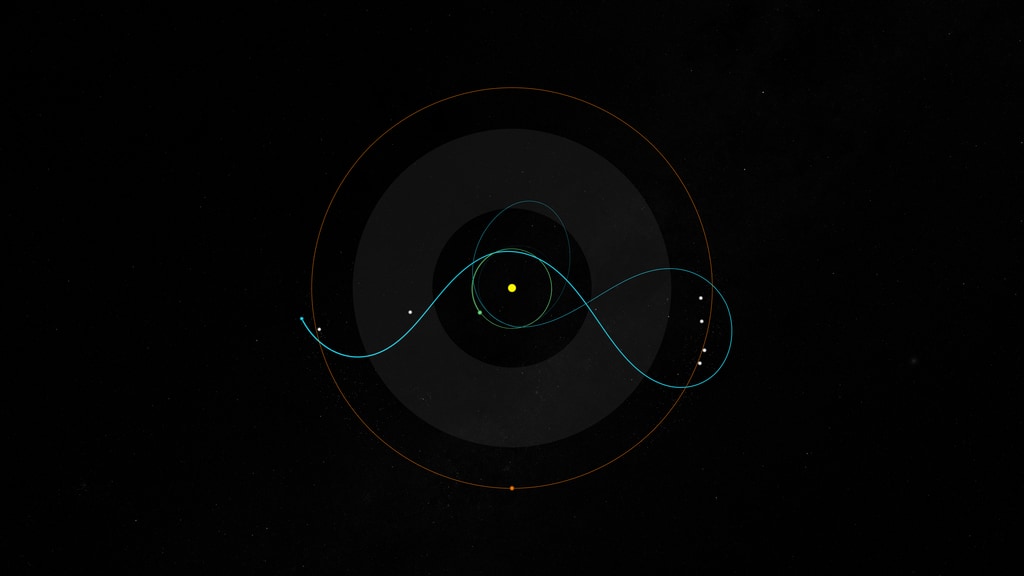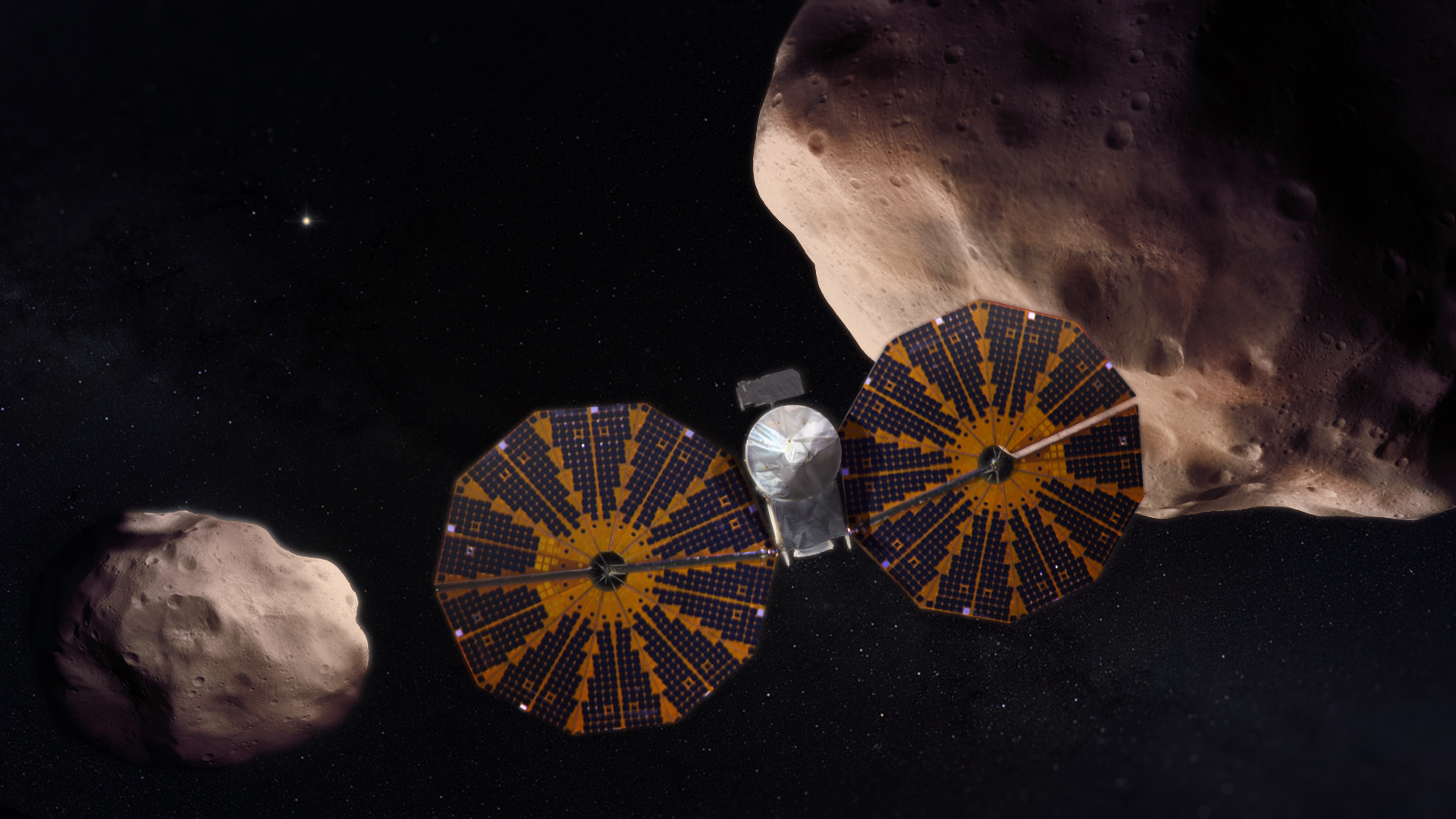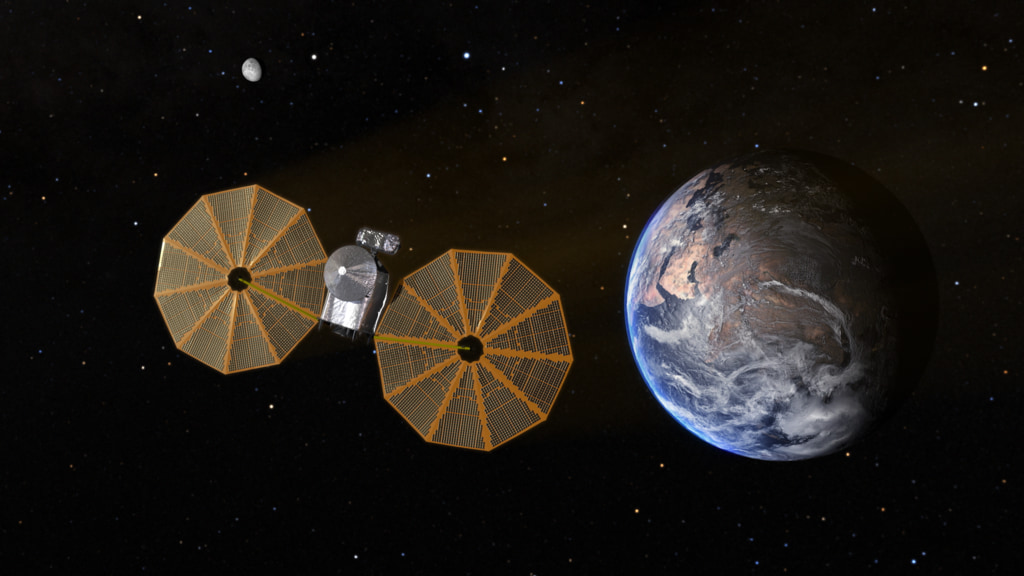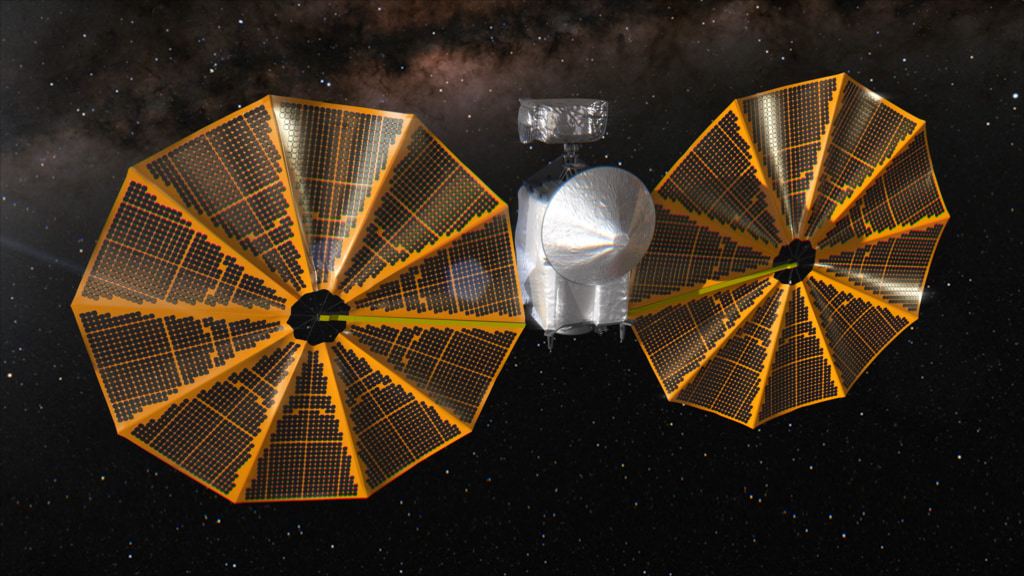Lucy Mission Trajectory 'Over-the-Shoulder' Views
This visualization is a view from the Lucy spacecraft as it travels through the solar system, represented in a Jupiter-rotating reference frame. In this reference frame, Jupiter appears fixed in space. This visualization spans from launch through the flyby of the main belt asteroid DonaldJohanson. (Part 1 of 3)
Lucy will be the first space mission to study the Trojans asteroids - two loose groups of asteroids that orbit the Sun, with one group always ahead of Jupiter in its path, the other always behind. These primitive bodies hold vital clues to deciphering the history of the solar system, and perhaps even the origins of life and organic material on Earth.
Lucy will launch in October 2021 and, with boosts from Earth's gravity, will complete a twelve-year journey to eight different asteroids — a Main Belt asteroid and seven Jupiter Trojans, the last two members of a “two-for-the-price-of-one” binary system. Lucy’s complex path will take it to both clusters of Trojans and give us our first close-up view of all three major types of bodies in the swarms (so-called C-, P- and D-types).
These visualizations give an 'over-the-shoulder' view of Lucy as the spacecraft travels through the solar system.
This visualization is a view from the Lucy spacecraft as it travels through the solar system, represented in a Jupiter-rotating reference frame. This visualization depicts the next portion of the mission, which includes flybys of Eurybates, Orus, Leucus, and Polymele. (Part 2 of 3)
This visualization is a view from the Lucy spacecraft as it travels through the solar system, represented in a Jupiter-rotating reference frame. This visualization depicts the final portion of the mission, which includes a flyby of the binary asteroid Patroclus/Menoetius. (Part 3 of 3)
This visualization is a view from the Lucy spacecraft as it travels through the solar system, represented in a Jupiter-rotating reference frame. This is a complete view of the entire mission, combining all three sections (parts 1-3) listed above into one visualization, including all asteroid flybys.
A closer view of the Lucy flyby of the binary asteroid Patroclus/Menoetius, represented in a Jupiter-rotating reference frame.
Credits
Please give credit for this item to:
NASA's Scientific Visualization Studio
-
Visualizer
- Kel Elkins (USRA)
-
Producer
- Dan Gallagher (KBR Wyle Services, LLC)
-
Animators
- Jonathan North (KBR Wyle Services, LLC)
- Michael Lentz (KBR Wyle Services, LLC)
-
Engineer
- Brian Sutter (Lockheed Martin)
Release date
This page was originally published on Tuesday, September 28, 2021.
This page was last updated on Wednesday, May 3, 2023 at 1:43 PM EDT.
Datasets used
-
DE 430
ID: 972
Note: While we identify the data sets used on this page, we do not store any further details, nor the data sets themselves on our site.




![Lucy’s flyby of main-belt asteroid 52246 Donaldjohanson will provide the first close look at this surviving remnant of the solar system’s chaotic past.Complete transcript available.Universal Production Music: “Nico’s Journey” by Nicholas Smith [PRS]; “Knowing Half the Future” and “Temporal Timings” by Lee John Gretton [PRS]; “Poly Propulsion” by Alfie Solo [PRS] Watch this video on the NASA Goddard YouTube channel.](/vis/a010000/a014800/a014821/Lucy_DJ_Preview_Thumbnail_V3.png)
![NASA’s Lucy spacecraft will make its second of three Earth gravity assists on Dec. 12, 2024.Complete transcript available.Universal Production Music: “Determined Arrival 4-5” by Joel Goodman [ASCAP]; “Floating” by Nicholas Smith [PRS]; “Subtle Confidence 3” by Joel Goodman [ASCAP]Watch this video on the NASA Goddard YouTube channel.](/vis/a010000/a014700/a014734/Lucy-EGA2-Preview-V4.jpg)
![Narrated video of Lucy’s encounter with the main-belt asteroid Dinkinesh and its satellite, Selam, on Nov. 1, 2023.Complete transcript available.Universal Production Music: “Gaining Positivity” by Ho Ling Tang [BMI] and Harry Gregson Williams [BMI], Atmosphere Music Ltd. [PRS]Watch this video on the NASA Goddard YouTube channel.](/vis/a010000/a014500/a014596/Dinkinesh_Detailed_View_V2.jpg)

